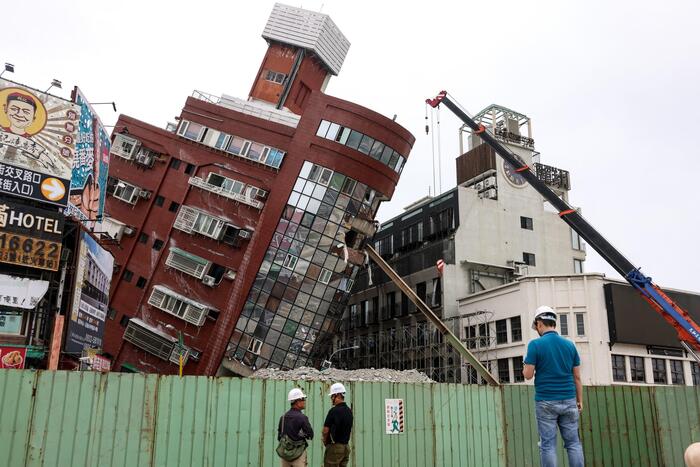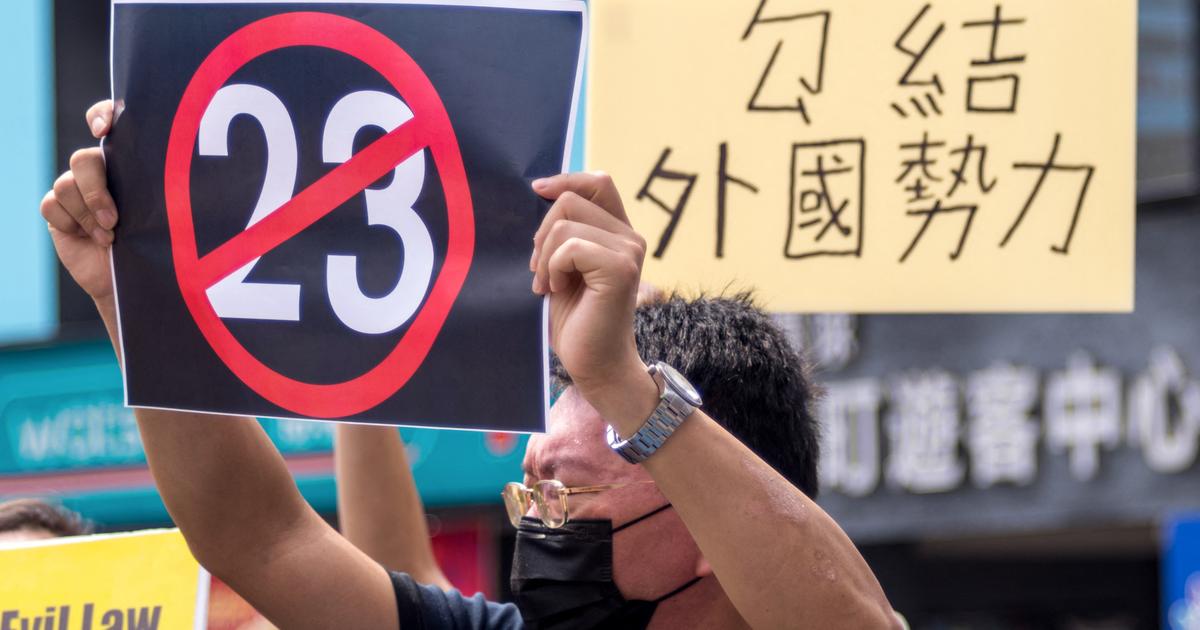In the early hours of this morning (14th), citizens shared their feelings about the earthquake on social networking sites. The Observatory received reports from more than 10,000 citizens that they felt a slight tremor that lasted for a few seconds.
The Observatory said that this was a shallow earthquake, and it occurred in a quieter time in the early morning, so it was easy to feel the vibration. When I woke up from the dream, the quake was stronger in the east of Hong Kong than in the west.
Leung Wing-wu, a spokesman for the Hong Kong Meteorological Society, said that although Hong Kong is not located in an active seismic zone, nearby earthquakes will also affect Hong Kong. The most serious one occurred on the third day of the Chinese New Year in 1918, in Nan'ao, a small island off the coast of Shantou, 300 kilometers northeast of Hong Kong. , a magnitude 7.3 earthquake occurred, and Hong Kong was also affected at that time, causing obvious damage to Hong Kong. At that time, almost all buildings were shaken, and many people rushed out of the buildings. The St. Joseph's College on Robinson Road at that time It was also relocated due to severe damage.
According to preliminary analysis by the Observatory, an earthquake with a magnitude of 4.1 occurred near the coast of southeastern China, 92 kilometers away from Hong Kong. The local earthquake intensity is IV (4) degree on the revised Mercalli seismic scale, which can cause suspended objects to swing.
Lin Ching-chi, Senior Scientific Officer of the Observatory, replied to "Hong Kong 01", saying that this earthquake was not a strong earthquake, but it occurred within 100 kilometers of Hong Kong, and during quieter periods, more citizens reported it through mobile apps.
Most people described it as the vibration of a large truck passing by, hanging objects swinging, doors and windows making noises, and a few residents reported waking up in their sleep. Comprehensive analysis is that the earthquake intensity is the closest to the No. IV degree.
Lin Jingzhi, senior scientific officer of the Observatory, said that this earthquake was not a strong earthquake, but it occurred within 100 kilometers of Hong Kong, and during quieter periods, more citizens reported it through mobile apps.
(file picture)
The quake was stronger in the east of Hong Kong than in the west
Lam Ching-chi said that the earthquake has been reported by citizens in all districts in Hong Kong, but the earthquake intensity reported in the west of Hong Kong (such as Tuen Mun and Kwai Tsing) is closer to the second degree of the revised Macquarie seismic intensity scale (that is, felt indoors). On the contrary, the eastern side (such as Sai Kung, Sha Tin, Tai Po, Hong Kong and Kowloon areas, etc.) feels more obvious, but has no impact on the buildings.
She also pointed out that the earthquake occurred in the waters of Huizhou City, Guangdong Province, with a focal depth of only 25 kilometers.
A slight earthquake occurred in Hong Kong
She also added that the waters of Huizhou City are not at the junction of seismic plates, but are on faults. When a slight earthquake occurs, the crust will release energy. It has also occurred in Hong Kong in recent years, including the occurrence near Tai Lam Chung Reservoir on January 27, 2014. The 1.8-magnitude earthquake on December 5, 2019, and the 1.4-magnitude earthquake near Cheung Chau on December 5, 2019 were degrees II and III on the revised Mercalli earthquake intensity scale, and only dozens of citizens reported both times.
She explained that there are also fault lines in Hong Kong, which may cause minor earthquakes, but the chances of major earthquakes are very small.
With reference to the short-period earthquake monitoring network established by the Observatory in the late 1970s, the last earthquake in Hong Kong with an intensity of IV (4) on the revised Mercalli seismic scale occurred on 5 January 2020 at 6:55 a.m. at the epicenter of that day. The location occurred in the waters of Xiangzhou District, Zhuhai City, the Pearl River Estuary, only 41 kilometers away from Hong Kong. The earthquake intensity was 3.4, but only more than 1,200 citizens reported the felt earthquake to the Observatory at that time.
Lin Jingzhi estimated that even if the public reported the report by telephone, the number of calls in the early morning was limited. In addition, the public may still be asleep in the morning, so the number of reports received was relatively small.
Liang Rongwu estimated that citizens were more likely to perceive the tremor in the dead of night.
(file picture)
A century ago, the earthquake in South Australia shook Hong Kong's buildings
Liang Rongwu also estimated that the public would be more likely to perceive the tremor in the dead of night.
He pointed out that even if Hong Kong is not located in the active seismic zone, when a large earthquake occurs in the neighboring areas, it will be affected, and the strongest earthquake felt in Hong Kong occurred a hundred years ago, that is, the South Australia earthquake on February 13, 1918.
According to the data of the Observatory, the earthquake occurred on the third day of the Lunar New Year. The epicenter was located near Nan'ao Island on the sea off Shantou, more than 300 kilometers away from Hong Kong. Among them, a strong earthquake with a magnitude of 7.3 occurred at 2:07 pm on the same day. The longest time.
The seismic intensity of the earthquake in Hong Kong was from VI to VII (six to seven) on the "Revised Mercalli Earthquake Intensity Scale" (i.e. everyone felt it and had difficulty standing).
According to reports at the time, the whole of Hong Kong felt the tremor when the earthquake occurred, and almost all buildings were shaking, especially in the Central District, there was a panic. fall.
As a total of 14 felt earthquakes occurred on February 13 and 14, many buildings in Hong Kong were damaged in the earthquake, and several cracks appeared in the walls of the rooms on the upper floor of the Observatory Headquarters. At that time, St. Joseph's College on Robinson Road It was also severely damaged and needed to be relocated. The occupants of a house on Peak Road had to be evacuated briefly due to cracks in the house.
5.7 magnitude earthquake east of Hualien, Taiwan Hong Kong Observatory: Some citizens felt a 6.5 magnitude earthquake in Yilan, Taiwan Hong Kong Observatory: More than 10 citizens reported feeling a 3.4 magnitude earthquake in Zhuhai, Guangdong Province The Observatory received more than 1,200 citizens reporting that they felt the shaking A magnitude 1.4 earthquake occurred near Cheung Chau, the Observatory received more than ten citizens reporting that the tremor lasted for several seconds






/cloudfront-eu-central-1.images.arcpublishing.com/prisa/3I74UEXLYRBBRPGPSGWNN6WXH4.jpg)
